In music, innovation often means striking a balance between preserving traditional craftsmanship and embracing modern technology. Yamaha, world renowned for its instruments, has mastered this balance with its Disklavier pianos, which combine a rich, resonant, classic acoustic piano with state-of-the-art digital technology.In this article, we’ll discuss what a Disklavier is, how the technology works, top features, and comparing models.
Quick Links:
What is a Yamaha Disklavier?
Can Disklaviers be Added to Any Piano?
Which Yamaha Pianos are Disklaviers?
Recording & Playback
Disklaviers in Education
Disklaviers in Performance
Do Disklaviers Hold Their Value Well?
Understanding Disklavier Technology
Summarizing the Disklavier’s Capabilities
Comparing Yamaha Disklavier Models
Yamaha ENCL
Yamaha ENST
Yamaha ENPRO
Common Features of the Yamaha Disklavier
FAQs About Yamaha Disklaviers
Do Disklaviers Play Through Speakers or the Acoustic Piano?
What Are the Speakers on Disklaviers for?
Do Disklaviers Help Teach People How to Play Piano?
Is the Disklavier a Real Piano?
Ask an Expert
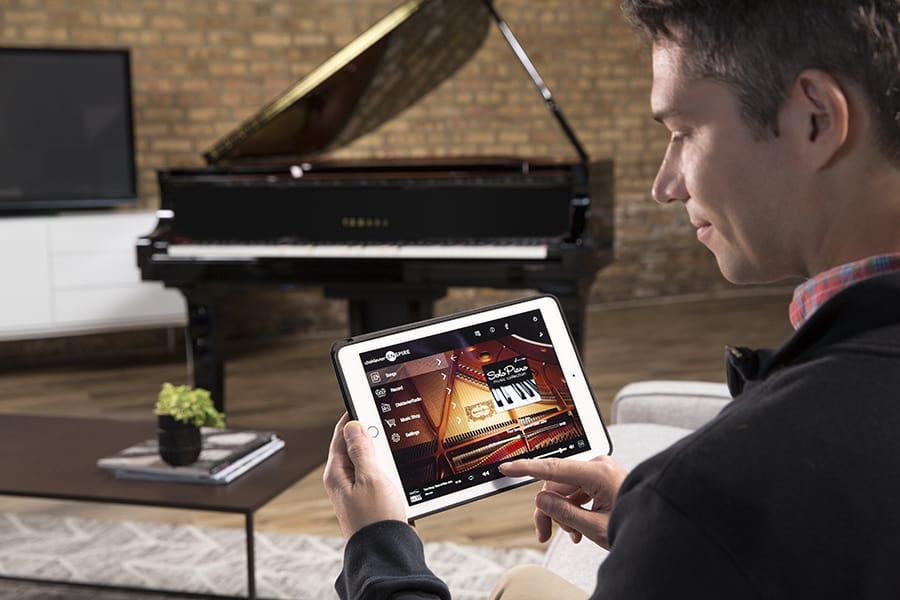
What is a Yamaha Disklavier?
The Yamaha Disklavier is a piano that combines the rich, acoustic qualities of a traditional acoustic piano with advanced digital technology. Essentially, it is an acoustic piano equipped with electronic sensors and actuators that allow it to record and play back piano performances with precision.
The keys and pedals move on their own during playback, precisely replicating the original performance. Additionally, it offers features like connecting to digital devices, silent practice with headphones, and accessing a vast library of music. This makes the Yamaha Disklavier Piano not just an instrument for playing and listening to music, but also a versatile tool for education, composition, and entertainment, blending the charm of classical piano playing with the innovations of the modern digital world.
Can Disklaviers be Added to Any Piano?
Yamaha Disklaviers are designed exclusively for Yamaha pianos due to their specialized integration and technological compatibility. This is because of the intricate way in which the Disklavier system interacts with the mechanical and acoustic properties of the piano. Yamaha pianos are engineered with specific features and tolerances that allow for the precise control and responsiveness required by the Disklavier’s playback and recording functions. The system uses complex sensors and actuators that must be meticulously calibrated to the unique action mechanism of Yamaha pianos. This ensures that the Disklavier can accurately reproduce the nuances of live performances.
The integration of a Disklavier system into a Yamaha piano is not just about adding hardware; it involves a compatibility between the piano’s design and the Disklavier technology to maintain the instrument’s acoustic performance while enabling digital features. Yamaha’s commitment to this compatibility ensures that the Disklavier enhances the piano’s functionality without compromising its traditional acoustic piano qualities.
The proprietary technology and precise installation mean that adding a Disklavier to non-Yamaha pianos would not only be technically challenging but could also lead to suboptimal performance and potentially damage the instrument. Thus, Yamaha Disklaviers are exclusive to Yamaha pianos to guarantee the highest standards of quality and performance that both the Disklavier and Yamaha brands are known for.
Which Yamaha Pianos are Disklaviers?
Yamaha Disklaviers are compatible with a range of Yamaha piano models, primarily focusing on their grand and upright piano lines. The specific models that can accommodate Disklavier technology may vary over time as Yamaha introduces new models or discontinues older ones.
Grand Pianos: Yamaha offers several series of grand pianos that are either available with Disklavier technology installed or can be fitted with it. These include:
- The Yamaha CFX Concert Grand, though primarily a concert instrument, has seen Disklavier editions in special contexts.
- The CX Series, including models like the C3X, C5X, and C7X, are popular choices for integrating Disklavier systems.
- The GB1K, the smallest and most affordable model in the grand piano line, is also available in a Disklavier model.
View a comprehensive list of current available Disklavier grand and baby grand pianos on our Yamaha Disklavier page.
Upright Pianos: While the integration of Disklavier technology is more common in grand pianos due to their larger size and more complex mechanics, certain upright models may also be compatible with modified or specific versions of the technology.
Special Editions and Custom Orders: Yamaha occasionally releases special editions of their pianos with Disklavier technology pre-installed. Additionally, for institutions or individuals with specific needs, Yamaha may offer custom installation services for models not typically associated with Disklavier technology.
To get the most accurate and up-to-date information about which Yamaha piano models are compatible with Disklavier technology, it’s best to consult directly with Yamaha or an authorized Yamaha piano dealer. They can provide detailed information on current models, available features, and installation options for Disklavier systems.
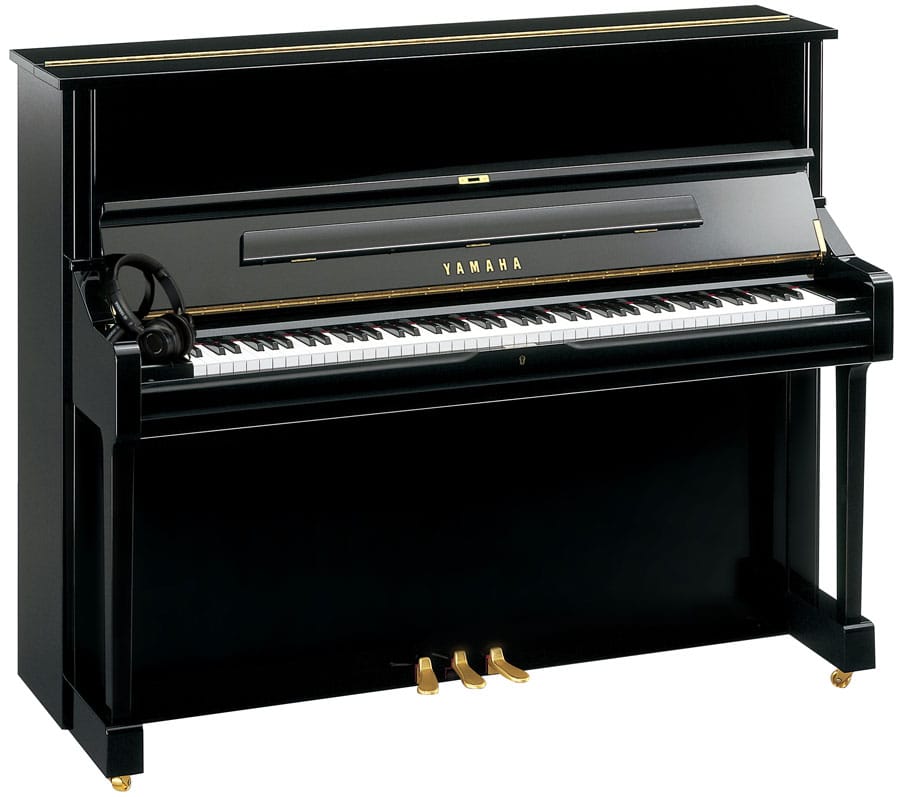
Yamaha DU1 EST Disklavier Upright Piano
Recording & Playback
One of the most notable features of the Disklavier is its ability to record and playback. This feature transforms the piano into a tool for both education and entertainment. Musicians can record their performances and play them back, an invaluable asset for both practice and composition. The playback feature also allows the Disklavier to function as a player piano, bringing the joy of live piano music into homes without the need for a pianist.
The technological prowess of the Disklavier extends to its integration with modern software and devices. The Disklavier can connect via MIDI to computers, smartphones, and tablets, opening a plethora of possibilities for composition, arrangement, and even distance learning. The Disklavier’s ENSPIRE system, the latest in the series, allows for wireless control, streaming of live or recorded performances, and even integration with video.
Another remarkable aspect of the Disklavier is its precision and accuracy in playback. Yamaha’s technology ensures that the subtle nuances of a pianist’s touch–from the strength of the keystrokes to the pedaling—are captured and reproduced with astounding fidelity.
Disklaviers in Education
Yamaha’s commitment to education is evident in the Disklavier’s applications in teaching and learning. The instrument’s ability to connect teachers and students across distances is revolutionary. A teacher can play on a Disklavier in one location, and their keystrokes can be replicated in real time on a student’s Disklavier elsewhere, facilitating a new, interactive form of remote learning.
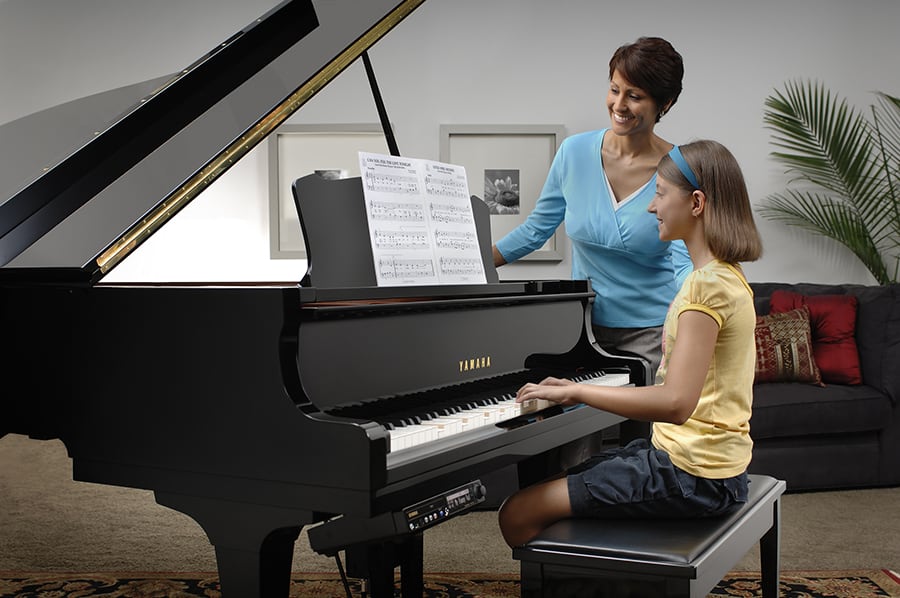
Disklaviers in Performance
The Disklavier also finds its place on the concert stage. Its precise playback is used for rehearsals, enabling orchestras to practice with the piano part even in the absence of a pianist. In performance, it can enhance live playing or serve as a faithful reproduction of a pianist’s earlier performance.
Do Disklaviers Hold Their Value Well?
In terms of investment, the Yamaha Disklavier holds its value exceptionally well. Not only is it a high-quality acoustic piano, but its digital features also ensure that it remains relevant and useful as technology advances. This dual nature makes the Disklavier a desirable instrument for educational institutions, professional musicians, and enthusiasts alike.
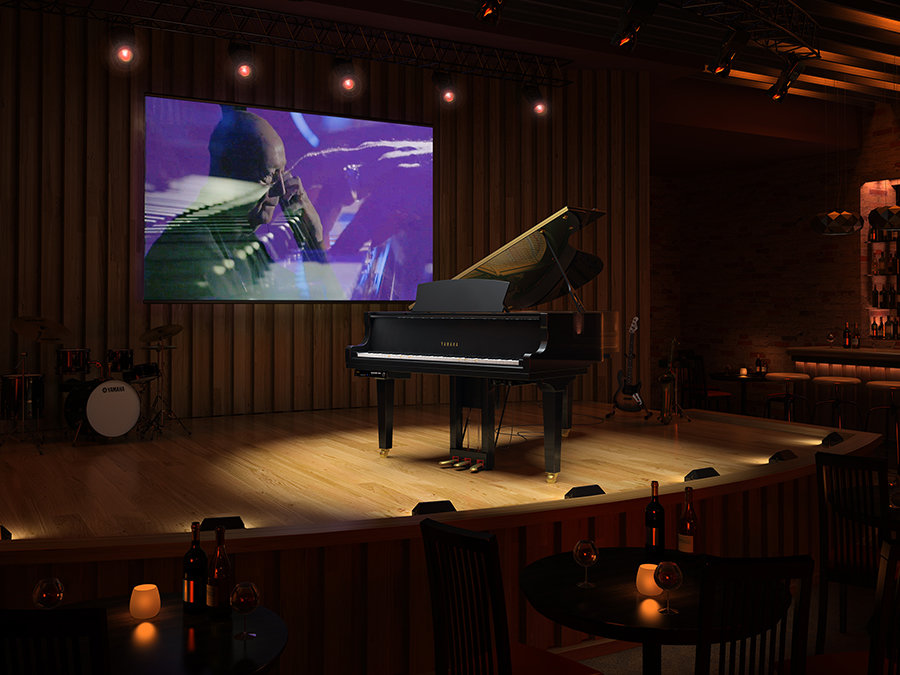
Understanding Disklavier Technology
The technology behind the Yamaha Disklavier is a sophisticated blend of mechanical artistry and digital innovation. At its core, the Disklavier maintains the integrity of a traditional Yamaha acoustic piano, renowned for its superior craftsmanship, resonant sound, and responsive touch. What distinguishes the Disklavier is its integrated electronic system.
The Disklavier system consists of highly sensitive sensors placed throughout the piano. These sensors meticulously detect and record the movement and velocity of each key and hammer, as well as the position of the pedals. The precision of this sensing technology ensures that every nuance of a pianist’s performance, from the softest pianissimo to the most robust fortissimo, is captured with exceptional accuracy.
In addition to recording, the Disklavier is equipped with an advanced playback mechanism. This mechanism employs sophisticated solenoids and actuators, which are devices that convert the digital data recorded by the sensors back into physical movement. This allows the piano to reproduce the recorded performance with remarkable fidelity, effectively mirroring the original keystrokes and pedal actions. The Disklavier’s playback capability transforms it into a player piano for the modern era, capable of presenting live piano performances without a pianist.
Its MIDI compatibility enables the Disklavier to interface with various digital devices and software, expanding its utility in composition, arrangement, and educational settings. This seamless integration of acoustic authenticity and digital versatility is what sets the Disklavier apart as a technological marvel in the world of musical instruments.
Summarizing the Disklavier’s Capabilities
The Yamaha Disklavier is a highly versatile instrument that combines the rich sound of a traditional acoustic piano with advanced digital functionalities. Here are some of the key capabilities of the Disklavier:
Recording and Playback
The Disklavier can record a pianist’s performance and play it back with high fidelity. This feature is particularly useful for musicians who wish to review and analyze their performances or for creating an immersive musical experience without a live performer.
Integration with Music Software
The Disklavier’s MIDI (Musical Instrument Digital Interface) compatibility means it can connect to computers and other digital devices. This allows for a wide range of applications in music composition, recording, and arrangement.
Silent Practice
Many Disklavier models come with a “silent” feature, allowing pianists to practice using headphones. This enables players to practice at any time without disturbing others.
Auto Accompaniment and Interactive Features
The Disklavier can be used to play back accompaniment tracks, which can be synchronized with live playing. This feature is particularly beneficial for solo practice, ensemble work, and enhancing live performances.
Music Library and Streaming
The Disklavier can access a vast library of recorded performances, which can be streamed and played on the piano. This includes classical, jazz, pop, and other genres, performed by renowned pianists.
Archiving Performances
The Disklavier’s precise recording ability makes it an excellent tool for archiving performances, preserving the nuances of a pianist’s style and music.
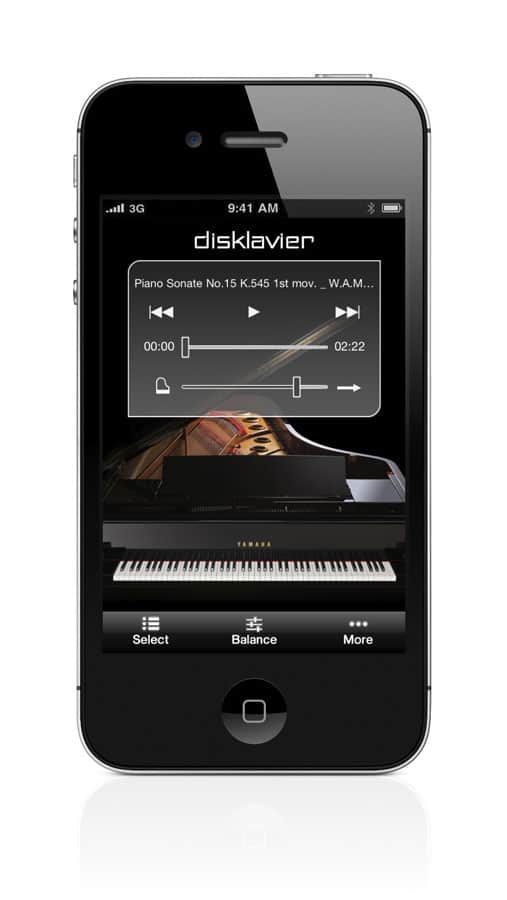
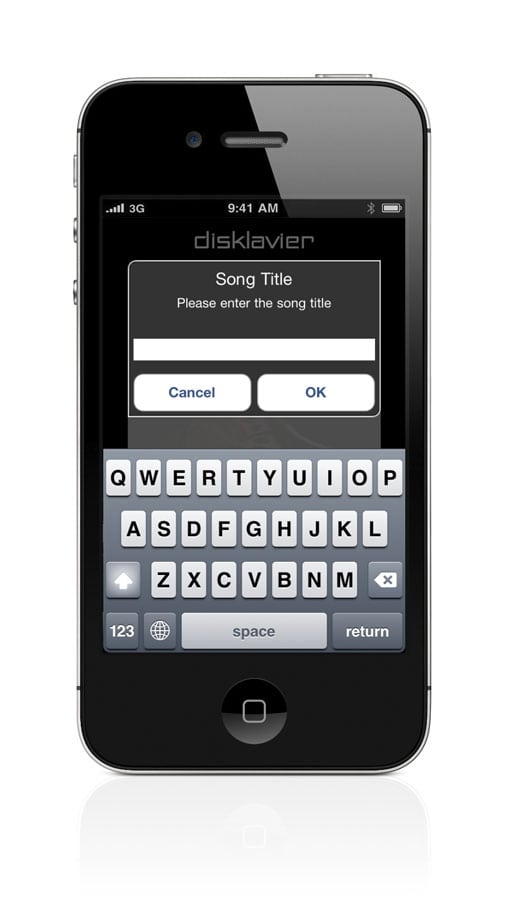
Comparing Yamaha Disklavier Models
The Yamaha Disklavier series has various models, each with unique features and capabilities.
Three notable Disklavier models are the ENCL (Enspire CL), ENST (Enspire ST), and ENPRO (Enspire Pro). While all three models retain the core functionality of the Disklavier system, they differ in terms of features and best uses. Here’s a comparison:
Yamaha Disklavier ENCL (Enspire CL) Features
- Entry-Level Model: The Enspire CL, or ENCL, is considered an entry-level model in the Disklavier ENSPIRE series. It is designed for those who want the essential features of a Disklavier at a more accessible price point.
- Features: The Yamaha Disklavier ENCL includes the basic Disklavier capabilities like recording and playback. However, it might have fewer advanced features compared to the higher-end models.
- Suitability: This Disklavier model is ideal for educational institutions, music students, or piano enthusiasts who seek the Disklavier experience without needing all the advanced features.
- Sound System: The ENCL typically has a simpler sound system, which is adequate for most home and educational environments.
Connectivity: While it offers MIDI connectivity and integration with digital devices, the Disklavier Enspire CL may have fewer options compared to the ENST.
Yamaha Disklavier ENST (Enspire ST) Features
- Standard Model: The ENST is considered a standard model in the ENSPIRE line, offering a balance between features and cost.
- Enhanced Features: In addition to the basic Disklavier features like recording and playback, the ENST often includes more advanced functionalities, such as a better sound system, enhanced recording capabilities, and more sophisticated playback features.
- Suitability: The ENST is well-suited for professional musicians, advanced students, and serious piano enthusiasts who require more than just the basic features.
- Sound System: The Enspire ST typically includes a more advanced sound system compared to the ENCL, offering a richer and more immersive listening experience.
- Connectivity and Extras: The ENST usually offers better connectivity options, including more advanced integration with digital devices and software, making it more suitable for professional settings or advanced applications.
Yamaha Disklavier ENPRO (Enspire Pro) Features
The Disklavier Enspire Pro offers the highest resolution recording and playback paired with the highest quality acoustic pianos for those who want nothing but the best. It excels in its ability to record and play back music with extraordinary detail. It can capture and reproduce an astounding 1024 levels of key pressure and hammer movement, as well as 256 different pedal positions. This is made possible by its advanced optical sensor system, which accurately tracks every movement of the keys, hammers, and pedals. Whether it’s the speed of the hammer hitting the string, the subtle use of the pedals, or how quickly the keys are released, the ENSPIRE PRO reproduces these elements with remarkable precision.
Common Features of the Yamaha Disklavier ENST, ENCL, and ENPRO
Most Disklavier models will share common features like:
- High-quality Yamaha acoustic piano craftsmanship.
- MIDI connectivity for interfacing with other devices.
- Ability to record and playback performances with high fidelity.
- Silent practice options with headphone capabilities.
- Access to Yamaha’s vast library of piano music and performances.
The choice between the ENCL, ENST, and ENPRO Disklavier models depends largely on the specific needs and budget of the user. For those who require a basic Disklavier with essential functionalities, the ENCL is a fitting choice. In contrast, the ENST is more appropriate for users who seek enhanced features for professional or advanced use. Regardless of the model, Disklaviers embody Yamaha’s commitment to blending traditional piano artistry with modern digital technology.
*While this demo is a little outdated and the technology has been modernized (including controls via smartphone and table was well as MIDI capabilities), there’s no doubt that Bert does an amazing job at showing what a Disklavier can do.
FAQs About Yamaha Disklaviers
Do Disklaviers Play Through Speakers or the Acoustic Piano?
The Disklavier plays acoustically in all instances, even with low volume, except for with silent practice. This means the hammers are physically hitting the strings. Volume is controlled by the force at which the hammers hit the strings. The only exception is in silent practice, during which the sound is replicated digitally through headphones.
What Are the Speakers on Disklaviers for?
The speakers are used for accompaniments, other instruments, and vocals. In addition, the Disklavier can be used as a “sound system” to play non-piano songs as well.
Do Disklaviers Have a Function for Teaching People How to Play?
Yes! The Disklavier connects with a wide range of educational features, including the Yamaha Disklavier Education Network which allows remote live lessons, remote live duet mode allowing two distant players to perform together, sight-reading aid with a “follow-the-lights” guide, and more. In addition, the Disklavier has interactive video tutorials, live coaching sessions, self-paced lessons, educational games, and more.
Is the Disklavier a Real Piano?
Yes, Disklaviers are real, high-quality traditional Yamaha acoustic pianos. They are the same Yamaha acoustic piano models that can be purchased from certified Yamaha dealers. The only difference is that Disklavier’s digital sensors, solenoids, and actuators are installed throughout the piano to produce its digital capabilities in addition to traditional acoustic performance.
Final Thoughts
The Yamaha Disklavier piano is a versatile and innovative instrument that offers immense value to both amateur and professional musicians. Its hybrid nature combines the authentic touch and tone of a traditional acoustic piano with cutting-edge digital technology, allowing for an array of functionalities such as recording, playback, and even remote lessons or performances. For homes, it adds a touch of sophistication and entertainment, enabling users to enjoy live piano music, even when no one is playing. For musicians, it opens a world of possibilities with recording, performance, and beyond. In educational contexts, the Disklavier serves as an invaluable tool for students and teachers, facilitating advanced learning techniques like playback for review and distance learning opportunities. Its appeal to both amateur and professional musicians lies in its ability to simulate the nuances of live performances and its utility in practice, composition, and performance, making it a comprehensive musical solution for a wide range of uses.
Ask an Expert
For more information on Yamaha Disklavier pianos, including pricing, current specials, promotions, or to schedule an in-person or virtual demo, please contact The Piano Gallery. Our knowledgeable staff is here to assist you in finding the perfect Disklavier piano to suit your needs and enhance your musical journey.
What colors does the best Disclavier come in?
Hi Claudia! It depends on the model of piano integrated with Disklavier technology. The typical Disklavier pianos’ most common colors are polished ebony, polished white, American Walnut, polished mahogany, and satin ebony. The highest-end models are typically available in polished ebony, but can be given a custom satin treatment.
how does Disklavier compare to Steinway Spiro?
Hi Jim!
A Yamaha Disklavier and a Steinway Spirio are both high-end player pianos, but they cater to slightly different needs and preferences. The Disklavier, a product of Yamaha, is renowned for its sophisticated technology that allows for precise playback, recording, and integration with digital devices. It features advanced capabilities like remote lesson functionality and a vast library of pre-recorded performances, making it ideal for both personal enjoyment and educational purposes. Disklavier is known for being more comprehensive and having more realistic in the reproduction of the piano playing. Also, the music library is much larger!
On the other hand, the Steinway Spirio is built on Steinway’s legendary craftsmanship and piano design, offering a great acoustic quality combined with their player technology. The Spirio is often favored by those who prioritize the traditional acoustic piano experience with the added luxury of high-quality, automatic performance playback, whereas Disklavier users appreciate both the acoustic piano experience as well as the high level of technological capabilities Both pianos represent the pinnacle of player piano technology, but the Disklavier leans more towards versatility and digital integration.
Really, the best way to get a feel is for an in-store demonstration! We can also offer a virtual demo through a video call if you’re not near one of our stores in Murray, Orem, or St. George, Utah!
I purchased a GC2 Disklavier Enspire in April and was delivered to me in May from Virginia to California. Unfortunately, there was a problem on the disklavier, half of the features are not working. It states that “CSP NOT FOUND”. I love the piano but I’m very sad and frustrated that until now I can’t enjoy what I paid for the piano.
Hi Farah! We’re so sorry to hear you’re experiencing this issue, and it’s definitely not the norm! Here are some suggestions to help troubleshoot your issue:
The “CSP NOT FOUND” error on a Yamaha Disklavier Enspire typically indicates an issue with the control signal processor (CSP) not being detected or found. This could be due to several reasons:
1. Connection Issues: There may be a problem with the physical connection between the components of the Disklavier system. Check all cables and connections to ensure they are securely and correctly connected.
2. Software/Firmware Issue: The system may need a software or firmware update. Ensure that your Disklavier Enspire is running the latest version of its software. You can check the Yamaha website or contact their support for updates.
3. Hardware Failure: There might be a fault in the hardware components of the Disklavier, such as the control signal processor itself. This would likely require professional diagnosis and repair.
4. Configuration Problems: Incorrect settings or configuration in the system might cause this error. Reviewing and resetting the settings to their defaults might resolve the issue.
Here are some additional troubleshooting steps you can try:
1. Restart the System: Turn off the Disklavier and unplug it. Wait for a few minutes, then plug it back in and turn it on.
2. Check Connections: Inspect all cables and connections between the control unit and the piano. Ensure everything is properly connected and seated.
3. Factory Reset: Perform a factory reset of the Disklavier Enspire. Refer to the user manual for instructions on how to do this. Note that this will reset all settings to their defaults.
5. Contact Support: If the above steps do not resolve the issue, contact Yamaha support or a qualified technician for further assistance.
If you need more specific instructions on any of these troubleshooting steps, please let us know, or feel free to reach out to one of our stores! If our Disklavier experts can’t help, we have technicians on staff who can likely walk you through some additional steps you can take or provide you with recommendations for speaking with a technician in your area who may be able to perform an on-site diagnosis.